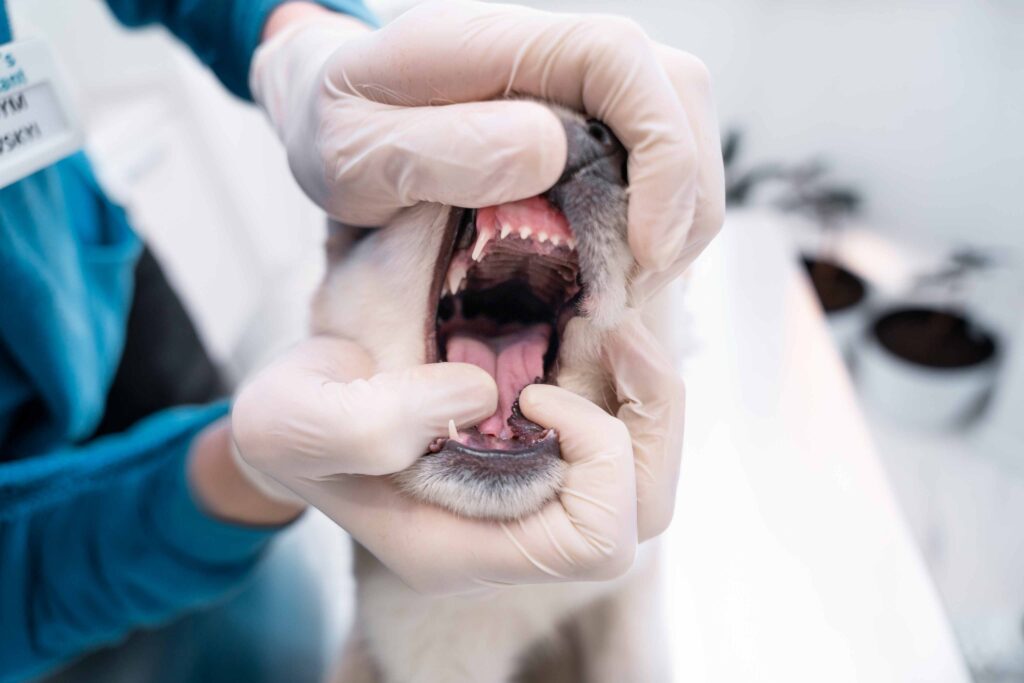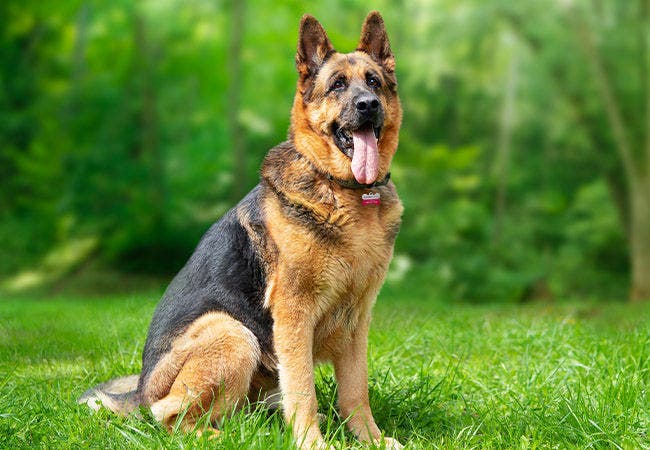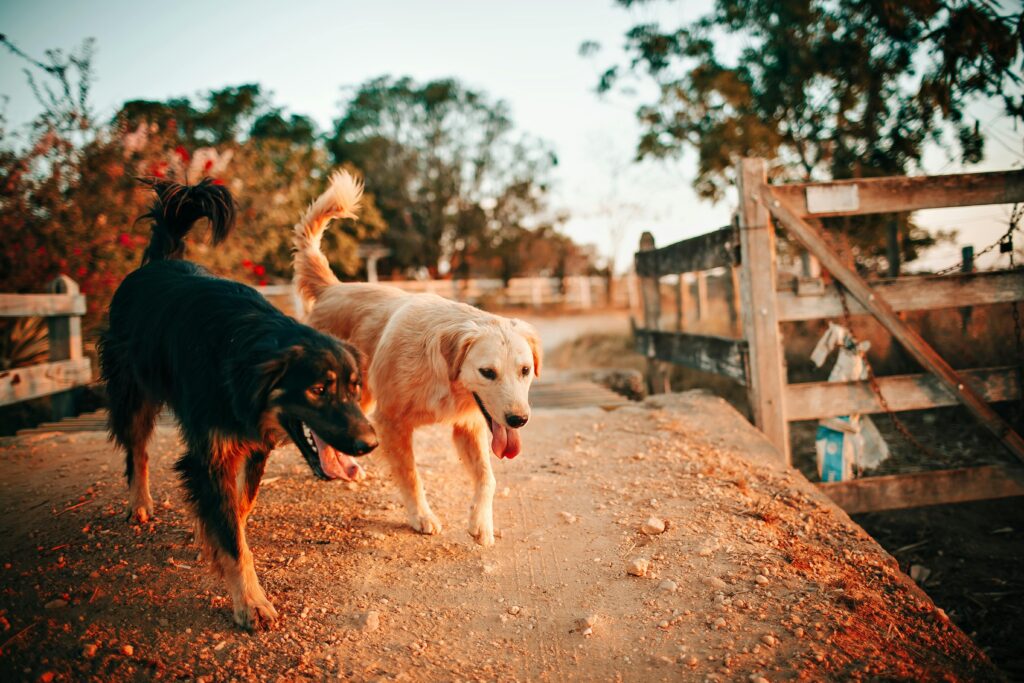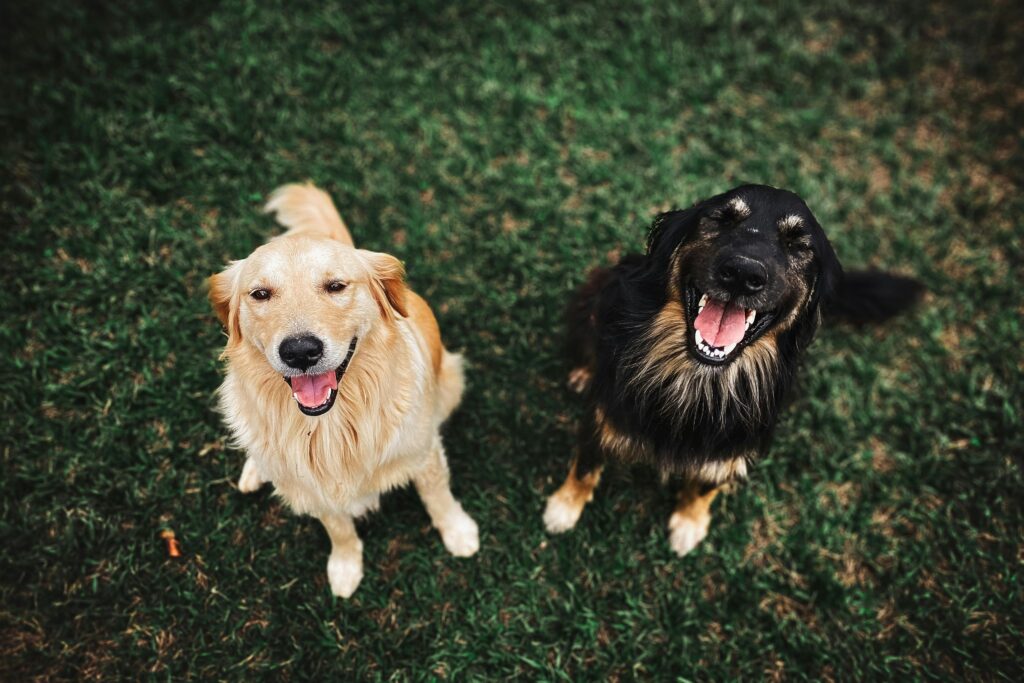When you hear dental care, your pet dog is likely not the first patient on your list. Yet, just as humans do, dogs can have severe dental conditions, conditions that at times call for surgical remedies. That’s where dog tooth removal enters the picture.
It might sound extreme, but the procedure is safe, effective, and sometimes absolutely necessary for your pet’s overall health in the capable hands of a professional veterinarian.
In this article, we’ll explore why dog tooth extraction is necessary, what the procedure involves, how to care for your dog afterward, the costs associated, and how veterinary professionals can benefit from platforms like VetPro360.
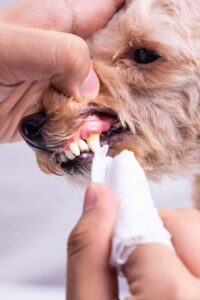
Understanding the Need for Dog Tooth Extractions
Dog breath will never be as fresh as a head of mint, but there’s a huge difference between “normal” and “problematic.” Dogs, particularly as they get older, struggle with a number of dental problems. From plaque and tartar to gum disease and chipped teeth, oral health in dogs is not a laughing matter.
The following are some of the most common reasons why dogs are faced with dental problems:
- Periodontal disease is the most prevalent Dog Tooth disease and occurs in approximately 80% of dogs three years and older.
- Teeth fractures: Fracturing a tooth through chewing hard toys or bones can expose nerves and lead to pain.
- Abscesses and infections: Usually the outcome of neglected decay or fractured teeth.
- Retained baby teeth: Particularly in small breeds, these may crowd out the mouth and lead to alignment problems.
All of these problems can get out of hand very quickly if not treated. Sometimes, cleaning isn’t enough; dog tooth extraction is best.
When Is Tooth Extraction Necessary?
Tooth extraction in canine patients isn’t something veterinarians do frivolously. It’s usually advised when:
- The tooth is dead or infected.
- Severe periodontal disease has occurred.
- A fracture has exposed the pulp (soft tissue inside) of the tooth.
- The tooth is nonfunctional or painful.
- There’s crowding because of retained baby teeth.
Leaving diseased or damaged teeth in your dog’s mouth not only pains him; it can also produce more serious health issues, such as blood-borne infections.
Indications Your Dog Needs a Tooth Extracted
Physical and Behavioral Symptoms
Dogs can’t quite verbalize, “My tooth hurts.” But in subtle ways, their body language and behavior speak volumes. If you know what to watch out for, the signs are fairly easy to read.
Look for:
- Avoidance of eating or chewing
- Food drops while eating
- Excessive salivation (occasionally with blood)
- Swelling of the face or jaw
- Pawing at the mouth
- Bad breath (more than usual)
- Visible tartar on teeth or inflamed gums
Pain can make your dog exceptionally grumpy or standoffish. Behavioral changes are typically your first clue that something is wrong in their mouth.
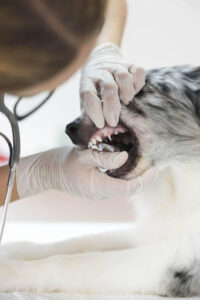
Diagnosing Dental Issues
A veterinarian is able to ascertain whether a canine tooth extraction is needed by doing a complete oral examination, followed by X-rays. The images permit an evaluation of the health of the roots and the amount of bone loss or infection.
Pro tip: Don’t wait until your dog is obviously in distress. Regular dental exams can detect issues early, before they become surgical cases.
The Dog Tooth Extraction Procedure
Pre-Surgery Evaluation and Anesthesia
Before embarking on canine dental surgery, veterinarians begin with a thorough evaluation. This generally involves:
- Physical exam
- Blood tests (to make anesthesia safe)
- Dental X-rays
Once the dog is ready, the doctor performs anesthesia. It is performed to the dog’s convenience and to achieve the precision which is necessary during the operation.
It is okay if you are scared; the anesthetics of today are very trustworthy, especially if handled by well-experienced veterinary technicians.
The Extraction Process Step-by-Step
Here is a general outline of how a veterinarian pulls a dog’s tooth:
- Preparation of the mouth: The tissue around the tooth is disinfected and anesthetized with a local anesthetic.
- Gum incision: The veterinarian usually makes a small incision in the gum to expose the tooth and the root.
- Removal of tooth: The tooth is gently extracted by the vet using surgical tools. Molars or multi-rooted teeth might need to be sectioned.
- Socket cleaning: Debris or infected tissue is cleared out to minimize the risk of infection.
- Stitching: The area is often closed up with stitches to promote the healing of the gums.
The procedure will last anywhere from 30 minutes to a few hours, depending on the number of teeth being extracted and the situation.
Home Care Tips and Precautions
Your work begins once your dog returns home. Recovery is not complicated but does take some TLC. Here is how to allow your dog to heal:
- Soft foods only
- No chew toys
- Limit activity
- Follow the meds schedule
Also, resist the urge to check the extraction site too often. Your vet will advise when examining your dog’s mouth is safe.
How Long Should Dogs Receive Pain Medication After a Tooth Removal?
The usual dog’s condition will require from 5 to 7 days of medicine following a dog tooth extraction, depending on the seriousness of the operation. In the case of more invasive procedures, such as multi-root molar extractions, the medication can last up to 10 days.
In general, the vet prescribes an anti-inflammatory medication such as Carprofen or Meloxicam. Sometimes, other mild opioids or gabapentin are also combined in the painkillers to raise the effect of pain control to a higher level.
Keep your dog under constant observation for symptoms of ongoing pain; overdrooling, whining, or resistance to eating may be a sign of something being amiss.
Dog Tooth Extraction Complications and Monitoring
Even if performed perfectly, there is always the possibility of complications. Look out for:
- Bleeding that lasts more than 24 hours
- Worsening swelling
- Pus or discharge from the mouth
- Refusal to drink or eat
- Fever or drowsiness
If you find any of these dog tooth extraction complications symptoms, don’t hesitate. Contact your vet right away.
Need assistance immediately? The PetMerk veterinary team is online 24/7 to assist pet owners.
Dog Tooth Extraction Cost
The price of dog tooth extraction is quite variable based on the following:
- Location
- Type of tooth
- Pre-surgical testing
- Time of anesthesia
- Clinic reputation and vet experience
On average, you’ll pay:
- Simple extractions: $150 to $300
- Complex or surgical extractions: $500 to $800 or more
Costs can jump through the roof if more than one tooth needs to come out or there is an underlying infection.
Dog Tooth Removal Cost vs. Dental Cleaning
Here’s a brief comparison:
| Procedure | Average Cost |
| Basic Dental Cleaning | $200 – $400 |
| Simple Extraction | $150 – $300 |
| Complex Extraction | $500 – $800+ |
| Full Mouth Extractions | $1,000 – $2,500 |
Though the cost is high, neglecting dental issues can pay much more in the long term, both in money and the health of your dog.
Common Complications and How Vets Handle Them
Even though unusual complications such as infection, dry socket, or delayed healing are rare, veterinarians prescribe antibiotics and may also have follow-up appointments to check on healing.
When to Call the Vet
If you notice uncommon signs like swelling, discharge, or deterioration of the dog’s condition, call your vet immediately for advice or emergency care.
Regular Brushing and Dental Chews
Brushing Teeth Regularly with Dog Toothpaste and Dental Chews keeps plaque at bay and makes it less likely to require extractions.
Regular Veterinary Checkups
Regular or semiannual dental check-ups by a veterinarian provide early detection and control of oral issues before they need to be removed. Successful dog tooth removal needs veterinary intervention. Do you require an expert veterinarian for your clinic?
Recruit through VetPro360, an employment platform bridging clinics with experienced veterinary experts. Veterinarians specializing in dental surgery for dogs can also find career opportunities at VetPro360 to improve their professional advancement.
Conclusion
Dog tooth extraction is a life-saving treatment that corrects agonizing dental issues, improving your pet’s health and comfort. The process involves careful diagnosis, skill in surgery and anesthesia, and careful post-operative monitoring. Prices differ based on complexity and location, yet expert veterinary services guarantee optimal results.
Platforms like VetPro360 help clinics find expert vets, while Petmerk supports pet owners with round-the-clock veterinary advice. Always consult your vet if you suspect your dog needs dental care.
FAQs
What do I feed my dog after tooth extraction?
Soft items such as canned dog food, cooked chicken, or prepared meals designed for this may be fed to the dog for several days after tooth surgery to ensure the healing tissues are not irritated.
Can dogs live with missing teeth?
Yes, dogs can be healthy, well-adjusted dogs with some missing teeth. However, periodic dental checkups are required to maintain oral health.
How can I determine if my dog’s tooth extraction site is infected?
On the lookout for swelling, discharge, offensive odor, continuous pain, or absence of appetite. In case any of these occur, instantly approach your vet.

